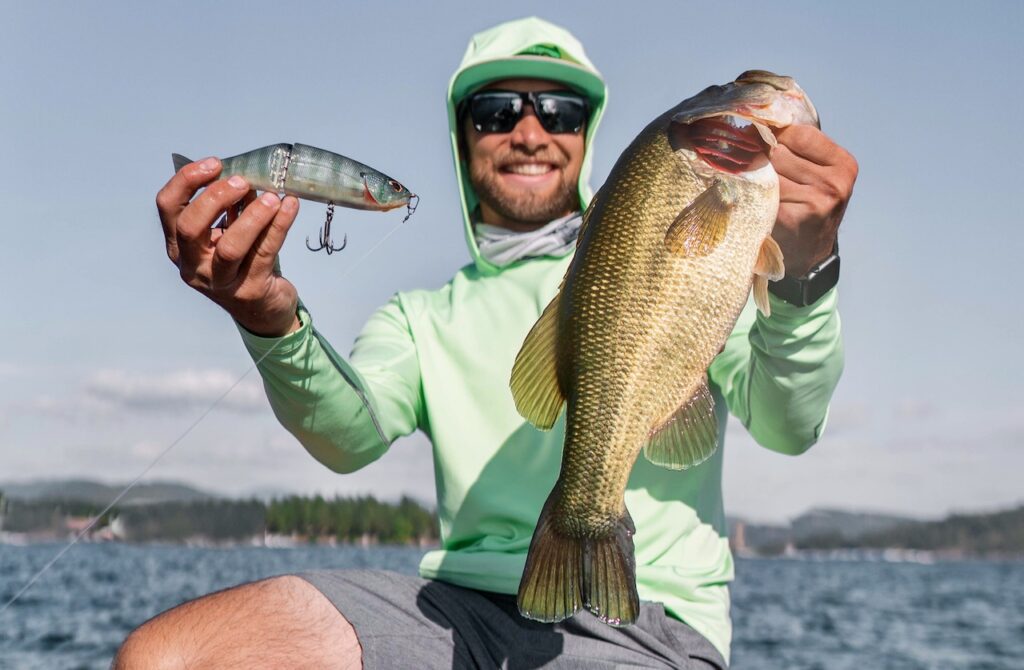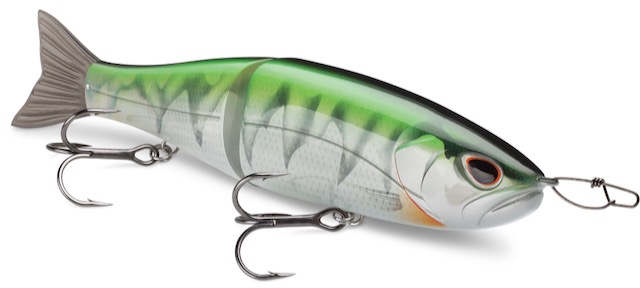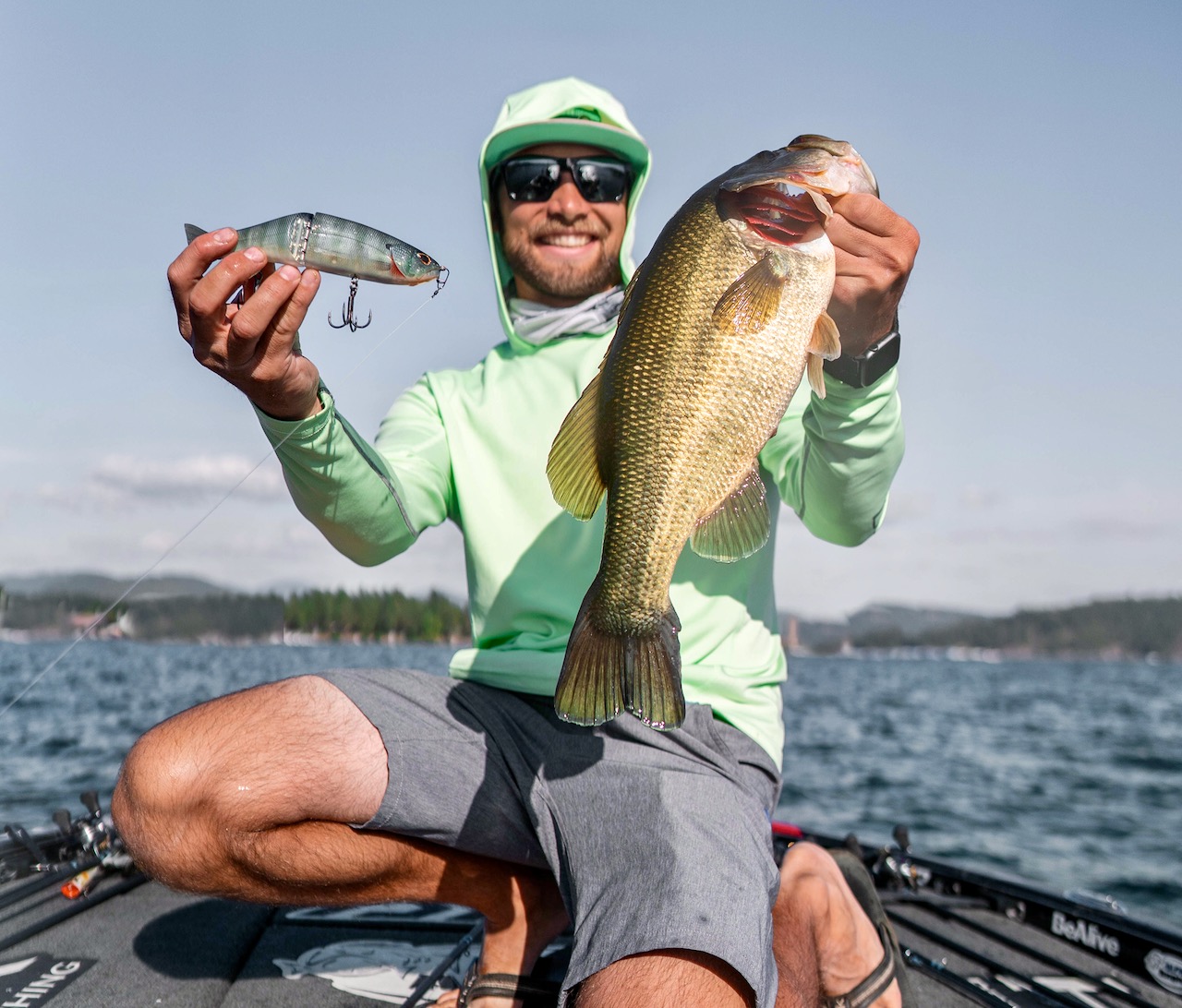IN THE SWIM OF THINGS
Pro swimbait tactics for putting more walleye, bass and lakers in the boat this summer
Advertisement

ANGLER: BRANDON PALANIUK
TACTIC: GLIDING FOR GIANT LARGEMOUTH
With five Bassmaster Elite wins and 2017’s Angler of the Year title to his credit, Brandon Palaniuk is pretty good at triggering the biggest largemouth bass to bite. “Daily, bass know how much food they need to consume, based on their metabolic rate,” says the Idaho pro. “By nature, a largemouth is not very active and wants to hide around cover and ambush prey.” With that in mind, one of Palaniuk’s favourite lures is a large, jointed hard-body swimbait, or glidebait, which represents a perfect high-calorie meal. “I’m able to create a scenario that triggers a bass into feeding that one time that day,” he says. “When a big fish sees that swimbait, it will seize that moment.”
When fishing big glidebaits, Palaniuk looks for classic ambush points that big largies favour, such as shade or cover created by a dock, grass mat or brush pile. In summer, the best spots are also close to deeper or moving water, both of which offer cooler temperatures and better oxygen content, which the bass need if the water gets too hot.
Advertisement
To tempt the biggest alpha bass out of cover, Palaniuk spent three years helping Storm develop a specialized lure, a seven-inch, three-ounce behemoth called the Arashi Glide Bait. Key to the bait’s success is that it can be fished at variable speeds. Palaniuk suggests employing a fast three-quarter turn of the reel handle, followed by a slow quarter-turn, which makes the bait glide to the side. Retrieving the slack while making another quick three-quarter turn then makes the lure glide in the opposite direction, mimicking a panicked baitfish. It’s important to have enough slack in the line so that the glide isn’t too narrow and unappealing, he advises.

Once a bass tracks the bait, Palaniuk speeds up his retrieve. “I’m trying to create the illusion that my imitation realizes it’s being chased, and is trying to flee,” he says. “If I’m unsuccessful, I’ll try to identify what structure the fish came from and try to cast from a different angle.”
To properly work and cast this bait, Palaniuk uses a 7′ 9″ Alpha Angler Wide Glide baitcasting rod, which has a parabolic bend to absorb the power of hard strikes. He pairs it with a Daiwa Tatula 300 reel spooled with 20-pound Seaguar Tatsu fluorocarbon. To cast, Palaniuk says to let the rod load on the backswing so that you basically lob the heavy swimbait.
Advertisement
Also, be sure to work the bait all the way back, he says, since many strikes occur by the boat. Palaniuk hypothesizes that’s because bass see the boat’s shadow as cover and figure the glidebait is trying to escape beneath it. And once you get a strike, he says, you’ll be a glidebait convert. Says Palaniuk: “It only takes one bite to get that addiction.”

